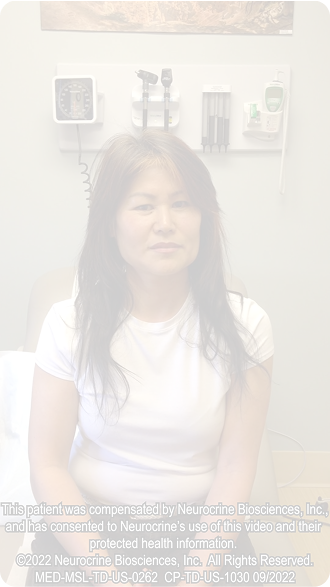

~4 mins
•Jan 2025
Digesting the DSM Lingo

This video features a brief clip from an HCP-patient interaction and is not a complete formal exam.
Would you count the movement(s) highlighted in the video toward this patient’s AIMS score?
Correct!
Mixed presentation: Some movements should be rated on the AIMS and others should not.
Incorrect!
Mixed presentation: Some movements should be rated on the AIMS and others should not.
Expert Faculty Commentary

Robert A. Hauser
MD, MBA, FAAN
Professor
Department of Neurology
Director
Parkinson's Disease and Movement Disorders Center
University of South Florida
Tampa, FL

Jonathan M. Meyer
MD
Professor
Voluntary Clinical
Department of Psychiatry
University of California San Diego
La Jolla, CA
This patient appears to have both tremor of the head as well as dystonic posturing of the neck and left shoulder. The head movement is rhythmic and not characteristic of TD and should not be rated on the AIMS. The dystonic elements are consistent with TD and should be part of the AIMS score for this patient.

Richard M. Trosch
MD
Associate Professor
Department of Neurology
Oakland University Medical School
Rochester, MI
This patient has a dystonic head tremor with eye closure producing dystonic leftward rotational posturing of 20 degrees. At rest she has a leftward lateral skew. This patient has cervical dystonia with a dystonic tremor. The AIMS instructions specifically exclude tremor from the AIMS rating, but the dystonic movements could be consistent with tardive dyskinesia.
This patient exhibits cervical dystonia and head tremor. Per AIMS instructions, tremor would not be included in the AIMS rating. However, her dystonic movements, which include left torticollis (head turning to the left) and left shoulder elevation are types of movements that could be consistent with TD and would be included in the AIMS rating.